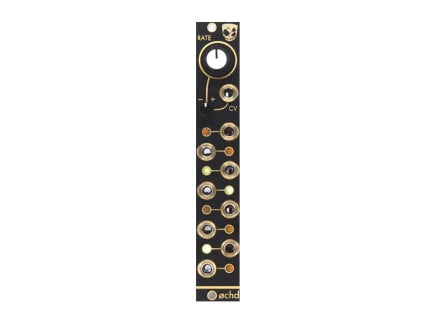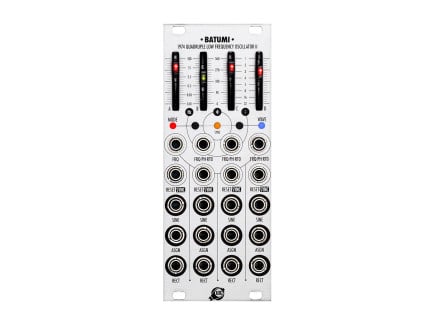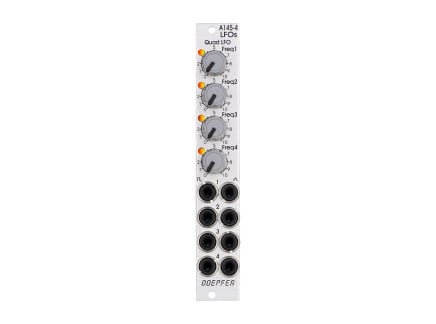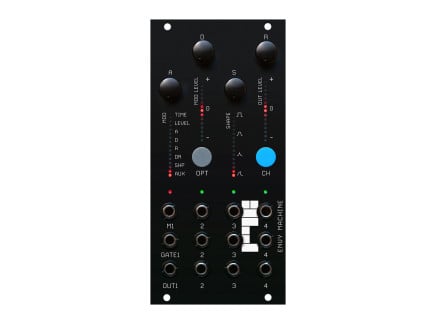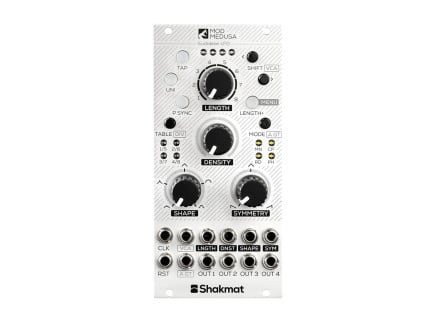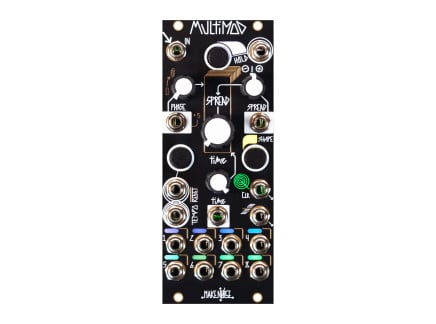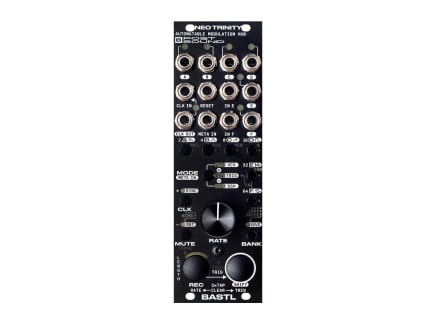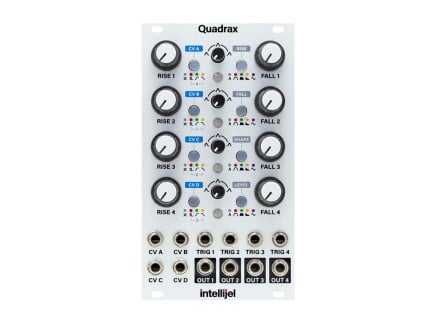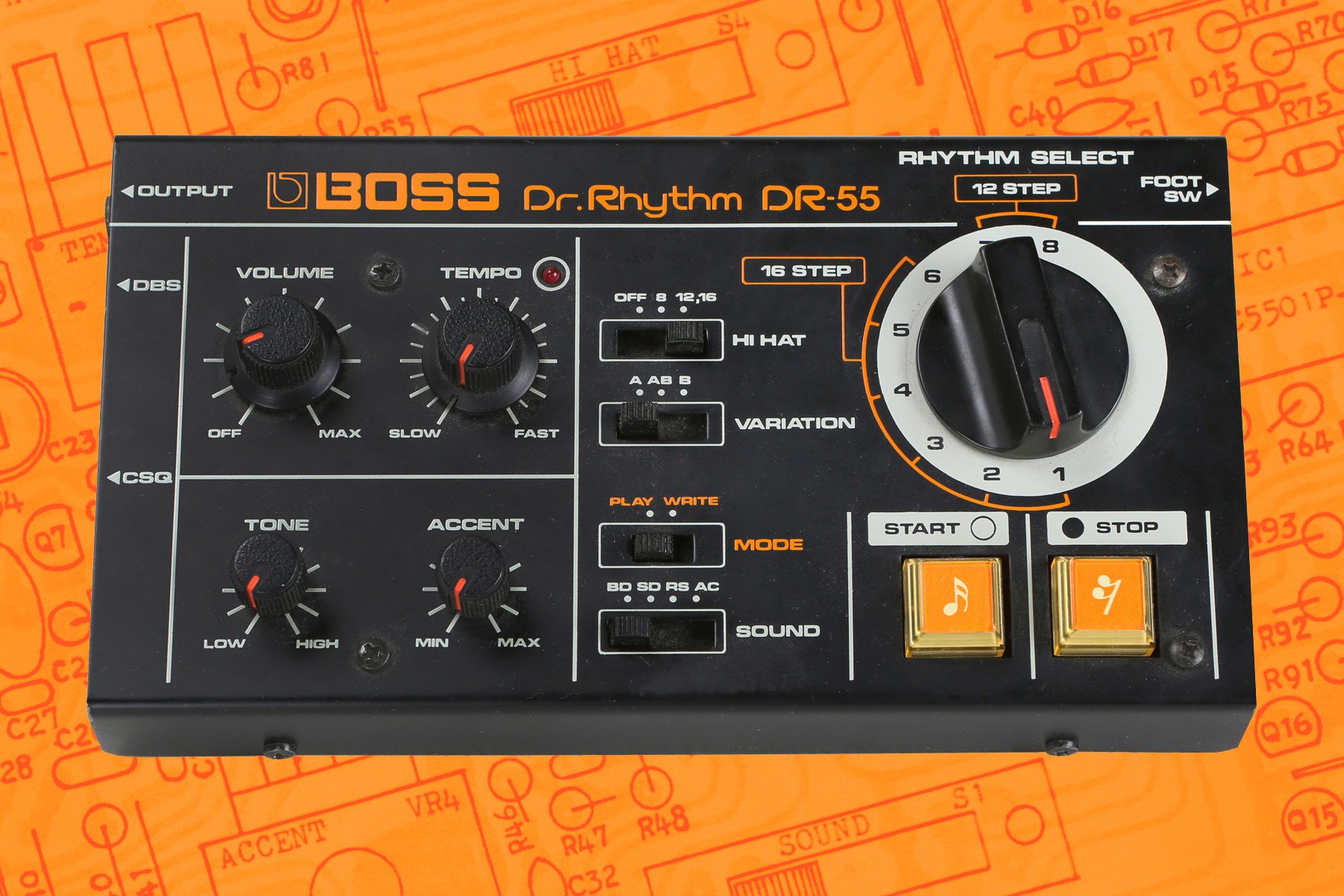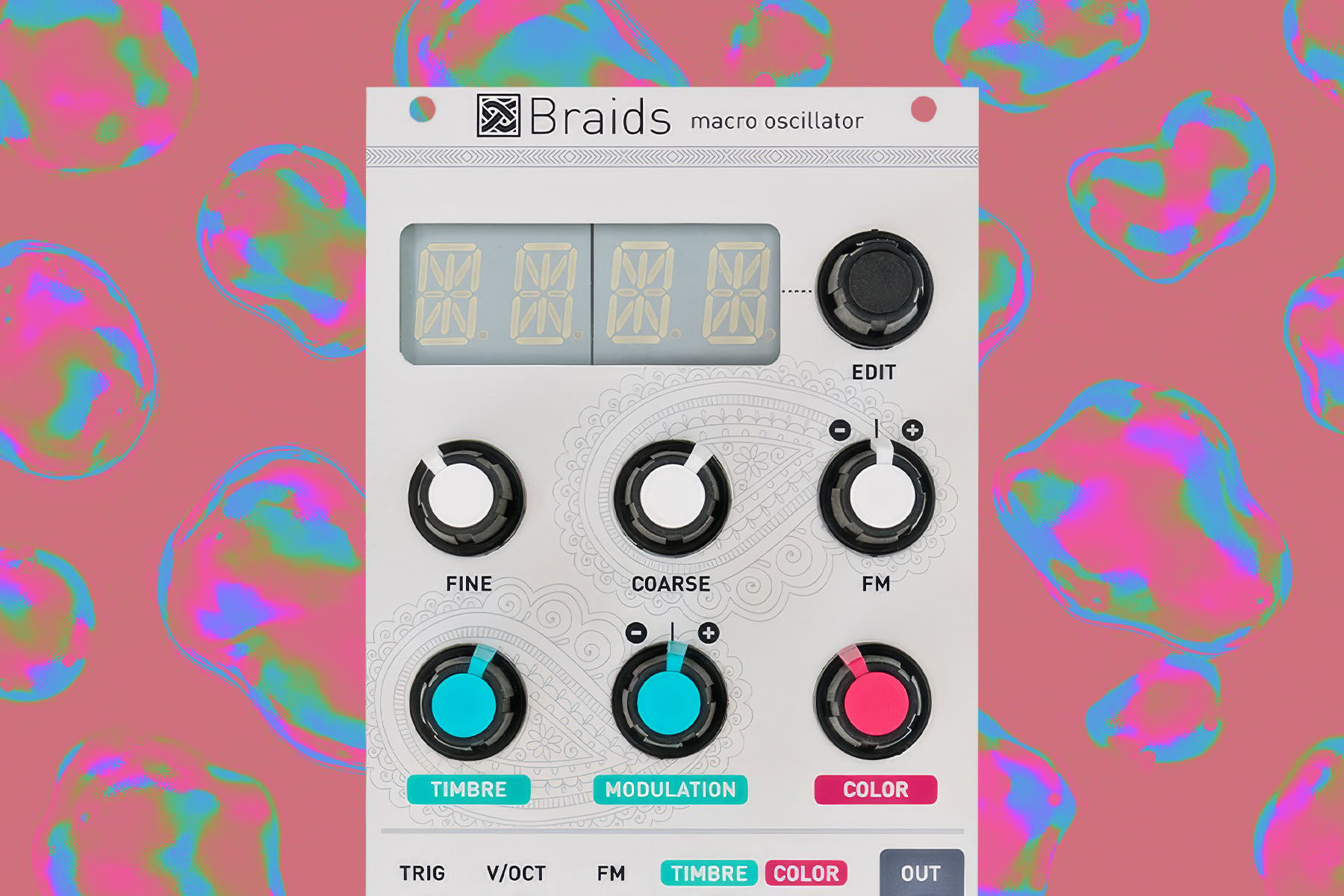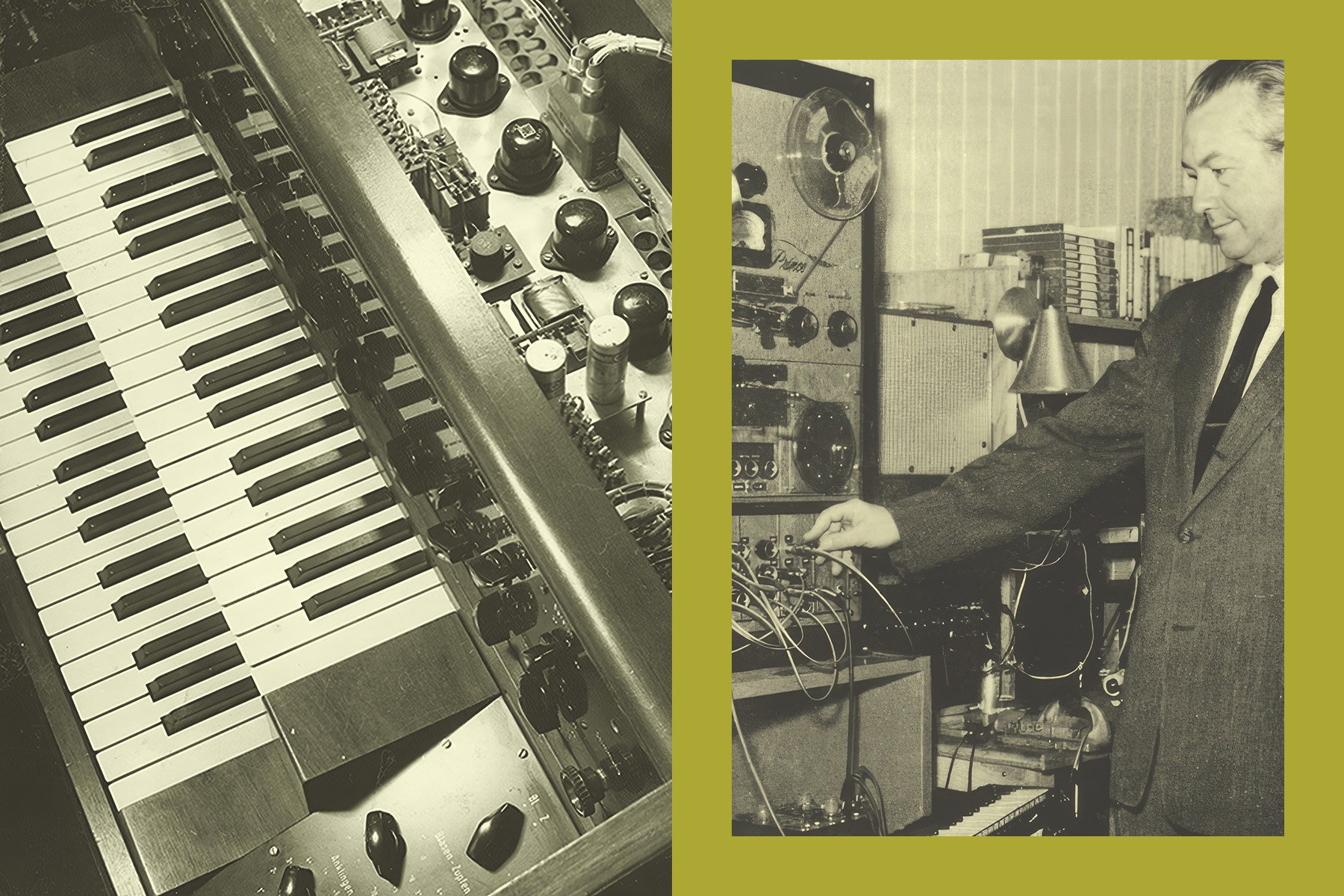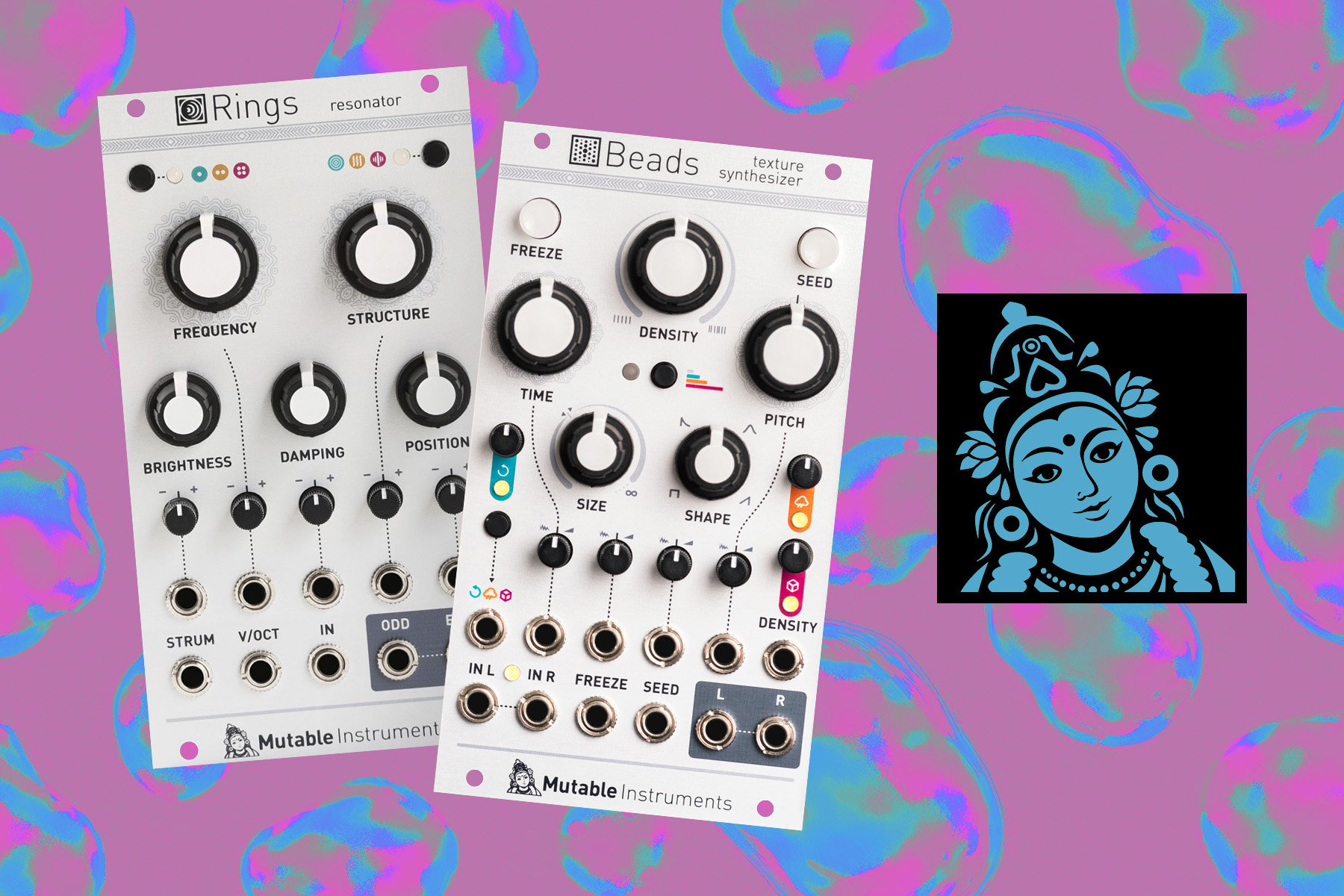The LFO, or Low Frequency Oscillator, is probably the most familiar form of modulation. This slow-moving signal turns knobs and slides sliders; it sweeps filters and wobbles notes and has been present in synthesis since the beginning. In early synthesizers, it was a regular oscillator that could be used for pitch, but you could wind it down to sub-audio speeds to modulate other things in the instrument. Today, it's common to have dedicated LFOs with their own waveshapes, features and possibilities. We use them to set a filter cutoff on a journey of change, add vibrato to notes, tremolo to sounds, or throw in some variation to our melodies and soundscapes. Without the LFO, synthesizers would be very dull.
So, let's dig into a variety of LFO modules, from the simple to the complex, to see how useful they could be in your modular system.
DivKid øchd
The beautifully realized DivKid øchd is a collaboration between YouTuber/Synthfluencer Ben "DivKid" Wilson, and modular makers Instruo. They describe it as an "organic drift" LFO, which hints at the intriguing way in which the LFOs are related. There are eight LFOs in total pouring out of illuminated sockets. A single rate knob serves as the master controller, piling on the frenetic activity from glacially slow to audio rate. Still, at all times, each one holds its distance from its companions.
The idea is that these LFOs are musically related. They are all set to intervals or multiples of the master frequency, with the fastest at the top, stepping down to the slowest at the bottom giving a sense of synergy between each of the LFOs. Whichever one you use feels somehow sympathetic to any or all of the others. And it's not a syncable device; you have to judge the speed yourself, which feeds into the whole idea of drifting and feeling just off the tempo but in a very organic way.
Each output generates a simple bipolar triangle shape but it is capable of being so much more. Using the CV input, you can push them into complex shapes through self-patching or using an external modulator. You can also use the input as a Track & Hold that retains a level with a high gate and releases it again when it drops. To really dive into the complexity, you can add the øchd expander module. It derives a whole raft of alternative outcomes, giving you a total of 24 modulation sources tied to that fundamental frequency.
Øchd is fascinating, beautiful to watch and experience, and would add sympathetic flavor to any patch. Just be aware of its lack of attenuation and inability to sync to your master clock. If you want specific movements and precise control, then this is not the LFO for you.
Xaoc Devices Batumi II
The original Batumi has been a staple feature in modular systems for a very long time. It offered four powerful LFOs in a number of different relationships that could liven up any patch. Version two elegantly refines that idea with subtle changes that bely its remarkable versatility.
To give it its full name, this is the Batumi II 1974 Quadruple Low Frequency Oscillator. You essentially have four identical vertical modulation channels that revolve around an illuminated slider. These LFOs can be independent and drift off on their own journeys, but they also like nothing more than to sync to your clock or, at the very least, latch on to an occasional reset.
For outputs, you get a +-5V bipolar SINE wave, a "RECT" square wave and a slightly mysterious assignable (ASGN) output. On the original Batumi, the waveform at the ASGN output was set via some very inconvenient jumpers on the back of the module. This version has a button on the front that lets you cycle between triangle, up/down sawtooth, trapezoid and stepped or smooth random. A colored LED tells you which waveform is selected, but I can never remember what they are, so the ASGN output is always a bit of a surprise.
The four LFOs can run free or be conducted in various synchronized modes. In Phase mode, they all follow the frequency of the first LFO but are phase shifted either 90, 180 or 360 degrees, depending on the slider. This gives a rather delicious sympathetic throbbing effect of phase-shifted modulation. In Divide mode, they are all subdivisions of the first LFO and in Mult mode, they are multiples. These modes make the Batumi II feel very solid and intentional in your patch.
One last and quite remarkable feature is that XAOC has stabilized and calibrated the oscillators to 1v/oct so that you can run them at audio rate as regular pitch oscillators. Suddenly, this workhorse of a modulator has become a four-channel VCO, and it sounds great.
For a bit more control and complexity, you can add the POTI II expander. It lets you attenuate the SINE and ASGN outputs and gives you shape control over each of the outputs. This results in waveshaping on the SINE, wave selection on the ASGN and pulse width modulation on the RECT.
Sometimes the front panel mode indications can feel a bit cryptic, and you can find yourself randomly tapping buttons trying to set the LFOs free from their sync mode, but otherwise it's a hard LFO to fault, and I'd definitely recommend getting it with the POTI.
Doepfer A-145-4 and A-147-4
The A-145-4 Micro or slimline LFO is one of the most straightforward modulation devices on the market. Four LFOs, four knobs and four sets of triangle and square wave outputs. There are four LEDs that glow between red and yellow to show the shift from positive to negative, but other than that, it's all a bit unexciting. However, it's not the job of an LFO to be exciting; it makes other things exciting! It's compact, independent, easy to patch and useful in every scenario. For a mild bit of interest, there are jumpers on the back to swap the rate range from slow to really slow, which can take it down to an 8-minute cycle.
Meanwhile, the A-147-4 is a bit more interesting. This is a dual LFO, so don't get fooled by the "4" at the end of the name. That number refers to the version rather than any particular feature. However, the two LFOs are voltage-controllable, which means you can control the rate and the pulse width of the square wave with another modulator. You can set the pulse width by hand, giving you a nice bit of control.
You have five waveform outputs including sine, triangle, two directions of sawtooth and a pulse. It also has a reset input for either LFO that will keep the cycles in time with your tempo. Other useful features are that the incoming CV can be attenuated for more subtle modulation, and you can switch the polarity to flip the direction.
It has jumpers on the back to set the LFO range similar to the A-145-4, but this time, it can go up to audio rates and be used as a regular VCO up to about 2.5kHz.
So, for simple, affordable multiple modulators, you can't go wrong with the A-145-4. For something a little more controllable, with more shapes and in time with your system, then the A-147-4 could be just the ticket.
RYK Envy Machine
That's a very intriguing name for an LFO. Maybe the idea is to make your modular mates jealous of your slick new multi-modular modulator, or maybe it's because it will fill that modulation-shaped hole in your heart. Who knows? The important thing is that the Envy Machine looks flippin' amazing and could take your modular on some fascinating journeys.
So, the details are that you have four channels represented by RYKs distinctive pin-prick LED meters (RYK calls them "Bars") and four knobs. RYK modules tend to have levels, and the Envy Machine is no exception. Through a couple of button presses, you can assign each channel to one of five modulation modes. These are regular LFO, random LFO, ADSR envelope, AD envelope and knob recording mode. The LEDs above the patch sockets let you know which channel you're fiddling with and the colour of the LED Bars tells you which mode. Moving from channel to channel and mode to mode will undoubtedly cause some confusion at some point, but if you can master the interface the rewards are pretty awesome.
Each mode can be fully modulated. The Bars and associated knobs transform into modulation parameters letting you allocate incoming CV to things like wave shape, level, envelope parameters, delay and rate. These parameters can be animated by recording knob movements, so you don't even have to have external modulators. This, of course, extends to the Knob Recording mode, where you can turn your twists of the knobs into cycling modulators.
There's a lot going on in the Envy Machine, and maybe it's the versatility that other people are going to be envious of. While there is the potential for confusion, the interface is elegantly designed to give you the best chance of keeping a handle on what's going on.
Expert Sleepers Otterley
Expert Sleepers decided to get into analog circuits when the Covid-related chip shortages started becoming a problem for their digitally-based modules. It turns out that they're really good at it. They also have unique patch sockets with embedded LEDs to indicate positive and negative output voltage. These are very groovy and useful, but they also tend to make the sockets feel a bit loose and less grippy on your patch cables.
Otterley has some similarities to the DivKid øchd in that it has a number of related LFO outputs tied to the same speed control. However, a "Spread" control pushes the timing relationship between the four LFO outputs apart for a greater degree of modulation flexibility. The LFOs can be bipolar or switched to negative or positive unipolar, as either sine waves or square waves. Interestingly, the waveform switch has a middle position that turns it off, like a bypass, which is something I've never seen before and can be a lot of fun.
At the bottom is an additional sine wave LFO that's completely independent, with its own speed knob and output. It’s really useful as a modulator for the speed or spread of the main LFOs.
The range of possibilities lies in the Spread control. If you keep things tight, then you can have very similar sine waves that gradually drift apart, giving your modulation a very organic feel. Dialling in some distance and switching to square waves will start developing some fascinating rhythms and interplays. Otterley feels like an intelligent LFO that pushes you into creative patching. The Reset will help it maintain a reference to your main clock, but Otterley is all about the drift.
Shakmat Modular Mod Medusa
LFOs are rhythmic in nature to the point of monotony. If you'd like to break the cycle and explore a more algorithmic approach to modulation, then the Mod Medusa could offer something really different. The Mod Medusa uses Euclidean patterns to define the LFO cycles. So it's not just being triggered by an Euclidean rhythm; the length of the cycle is being adjusted to fit between the pattern pulses.
Euclidean patterns are about setting a pattern length and then dialing in the density of events within that pattern according to Euclidean algorithms. If that sounds complicated, all it really means is that you have a repeating pattern of steps and the steps fill up in a sensibly ordered way as you tune in the density.
The Length knob goes up to 8 steps, but with a button press, it can double up to a maximum of 16 steps. As you increase the density, the LFO will fill the gap between the active steps, giving you a fabulous burst of long and short cycles. Plug it into a filter cutoff and you are treated to a sort of "w-o-o-r-b, wob wob wob, w-o-o-r-b" effect, if that makes any sense!
There are a number of modes and ways to vary the outcome. You can shift the pattern steps forward or backward to hit on the right starting point for your pattern. There are multiple algorithmic options to give you differing patterns. With the Shape and Symmetry knobs, you can change the LFO waveform giving a very different feel to the modulation. There are also four outputs that you can use as completely independently configured LFOs, or have them mathematically related. There's a lot of CV control available to keep pushing the Medusa into deviation, and it even has a VCA for level control.
Overall, it's extremely capable and diverse in possibility, offering a unique level of controlled variation. Shifting through the four channels on a single shared interface can be fiddly and sometimes confusing, and it may take some time to learn the modes and menu structure. But the work is definitely worth it.
Five12 QV-L
What immediately strikes you about the QV-L is the beautiful pair of displays. There's nothing better than being able to visualize your modulation, and here we have the waveforms being drawn in real time, right on the front panel. It's a four-channel LFO, and these are organized into LFOs 1 and 2 being run by channel A on the left and LFOs 3 and 4 being run by channel B on the right. It all feels a bit more complicated than it needs to be.
As you step into edit mode, the screens combine to give you information about what you're doing. Each LFO can be set up as one of around 19 waveforms. This includes all the usual subjects but also combinations, variations, noise, randomization, and chaotic behavior based on the Lorenz attractor. There are two envelope modes which you can access via the gate inputs. You can then control the waveforms' range, rate and shape to forge the perfect modulator for your modular. You can also modulate the settings of one LFO with the output of another, giving you a huge range of possibilities within the module itself.
Once you've crafted the modulators of your dreams you can save the configuration into one of 48 presets. And I think that's the point: the QV-L is not a casual LFO for spontaneous patching; it's a thoughtful, sound designer toolbox of modulation that will delight the fiddler, the engineer and the experimenter who likes nothing more than digging into the details.
AJH MiniMod Tap Tempo VCLFO
I really like how the Tap Tempo VCLFO lays the emphasis on the choice of waveform. It feels like a very different approach and encourages you to consider the shape you want to use before considering the speed or level. That shape is key because when it comes to the voltage control element of this LFO, it's all about giving you the ability to modulate the wave selection.
It means you can have a different waveform for every single cycle if you wish, generating these fabulous bursts of different modulations. Another brilliant feature is the Multiply knob that throws in speed changes that are in time with the main tempo. The combination of controlling the wave selection and Multiply factor gives tremendous bursts of excitement and variation.
The VCLFO has two banks of wave shapes. The first bank has eight familiar waveforms you'll find anywhere, and the second has more unusual ones, including bursts and stepped modulation sequences. The chosen waveform can be modulated with the Twist control, pushing the cycles in a pulse-width-modulation kind of way. There's also a level control for attenuating the output for more subtle change levels.
The Tap Tempo function seems to be a fairly unique feature which lets you tap along to the rhythm of your sequences to match up the speed of the LFO cycles. I'm not sure how useful that is because, generally speaking, you'd probably patch in a clock, but for those moments when you want something a bit more changeable or playful around tempo changes, it begins to show its quality.
Overall, the Tap Tempo VCLFO has a lot going for it in playful, dynamic patches where modulation is king.
Conclusion
From basic cycles to complex interplays of modulated voltages, LFOs can offer some badly needed automation of sound shaping and rhythmic finagling. Since the dawn of synthesis we've reveled in the ability to use signals to mess with other signals. Basic LFOs like the ones from Doepfer are satisfying in their simplicity. They work without taxing your limited resources and keep things interesting. More complex LFOs push a more creative agenda in letting you develop a patch with rhythms away from unusual places, and throw in much-appreciated hooks and loops.
LFOs are not the only modulation source, and you may find that you have modules that can offer similar opportunities. Envelopes can provide a similar source of repeating waveforms. You can send them constant triggers to turn the ADSR shape into a cycle, or you'll often find that they have a looping mode built in. The Make Noise Maths is famous for this facility in its twin Rise/Fall envelopes and is often the first place modular users encounter this sort of multi-purpose modulation. You can also use sequencers to generate repeating modulation shapes. However, getting a dedicated LFO module with give you a bit of clarity around your choices, and some of the ones in this article can take you down some very creative roads beyond a simple sweep of a knob.


